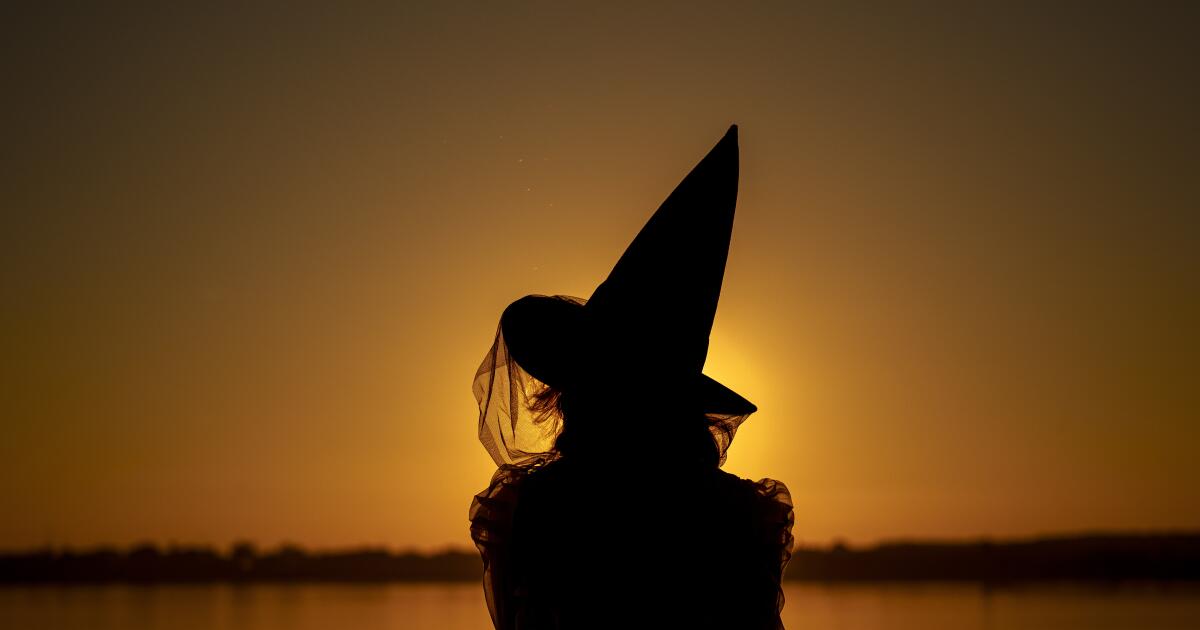Probably the greatest components of latest parenthood is determining what your youngster goes to be for Halloween. Contemplating the costume prospects for my 15-month-old, I’ve been shocked and infrequently delighted by what one can discover on the web. For an inexpensive worth, you may gown your child up as Cher Horowitz, Doc Brown, Lord Farquaad, Mary Poppins or a Rydell Excessive cheerleader when you your self tackle the persona of Austin Powers, Forrest Gump, Harry Potter or Surprise Lady. The vacation appears nostalgic and harmless, even unifying in its attraction to the one factor all of us share: that we had been kids as soon as.
That’s, after all, till I stroll exterior, the place I’m reminded of my lifelong discomfort with the extra lurid points of Halloween. Throughout me are properties festooned with terrifying man-made skeletons, goblins, clowns and witches. “How can anybody stand this?” I maintain asking myself.
Because it seems, Halloween has all the time been rooted in dueling concepts of the otherworldly. Put aside within the ninth century as a day to honor the Catholic saints, it succeeded a good older Gaelic celebration of transition between seasons and states of being. Our trendy vacation is perhaps regarded as a portmanteau of All Hallows’ Eve — the Christian feast that precedes All Saints’ (or Hallows’) Day — and Samhain, an historic Celtic vacation marking the ultimate harvest of the 12 months and the start of winter.
As Katherine Might writes in her ebook “Wintering,” Samhain (pronounced sah-win) represents a seasonal and non secular threshold at which the veil between this world and the following is at its thinnest, inviting family members we’ve got misplaced to go to us. Between fall’s radiant foliage and the 12 months’s first snow, it’s “a time between two worlds, between two phases of the 12 months,” and “a method of marking that ambiguous second if you didn’t know who you had been about to grow to be, or what the longer term would maintain.”
As we speak we’ve got misplaced a lot of this reverence for Halloween, but the vacation continues to thrive. Oblivious to its authentic function, our trendy model is an expression of the American concept you can be whoever you need to be in addition to a automobile for our tensions and anxieties, turning loss of life right into a joke with non permanent disguises and ornamental one-upmanship.
Possibly the indifferent skulls and bloody fingers on our lawns are a part of an endeavor to harness or reclaim our fears. Or perhaps the fantastical monsters of our imaginations have grow to be simpler to face than the human monsters operating for our public places of work — a course of that culminates each few years, because it occurs, simply days after Halloween.
Within the run-up to the 2018 midterm elections, Elizabeth Bruenig wrote for the Washington Publish that Halloween “will get its depth and intrigue from the layering of issues that appear horrifying however are actually benign — toothy jack-o’-lanterns, ghoulish costumes, tales of ghosts and witches and monsters — atop issues that appear benign however are actually horrifying, such because the passage of the harvest season into the lengthy, chilly darkish.”
But what if we must always actually be frightened not a lot of the “lengthy, chilly darkish” as our unwillingness to confront it? Individuals generally appear unable to face the actual darkness of the world, a lot much less embrace what might be gained from it: compassion for others’ struggling; acceptance of the seasonality of life; separation from the capitalist hustle; and a larger sense of gratitude, belonging and function.
The passage of time, grief for these we’ve got misplaced, eager for a greater world that appears perpetually out of attain — all of this stuff might be horrifying. However they don’t must be.
As election day looms simply past this historic celebration, it’s time to place the “hallow” again in Halloween. Amid the naked branches, flickering candles and migrating birds lies an invite to mirror not solely on the kids we as soon as had been but additionally on the adults we aspire to grow to be — and to dwell, for a second, within the seasonal and non secular in-between.
Cornelia Powers is a author who’s engaged on a ebook concerning the golfer Bessie Anthony, her great-great-grandmother.





